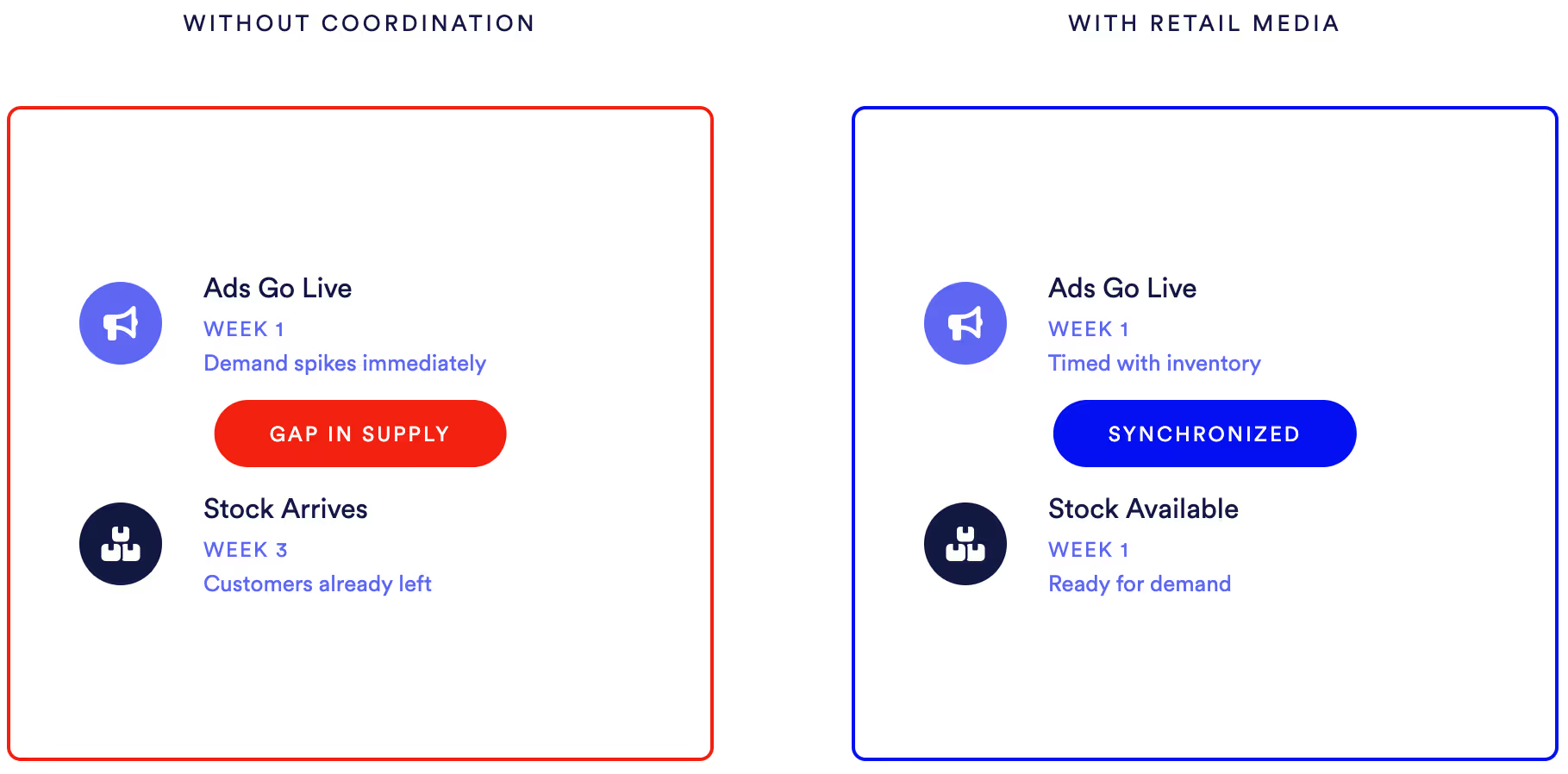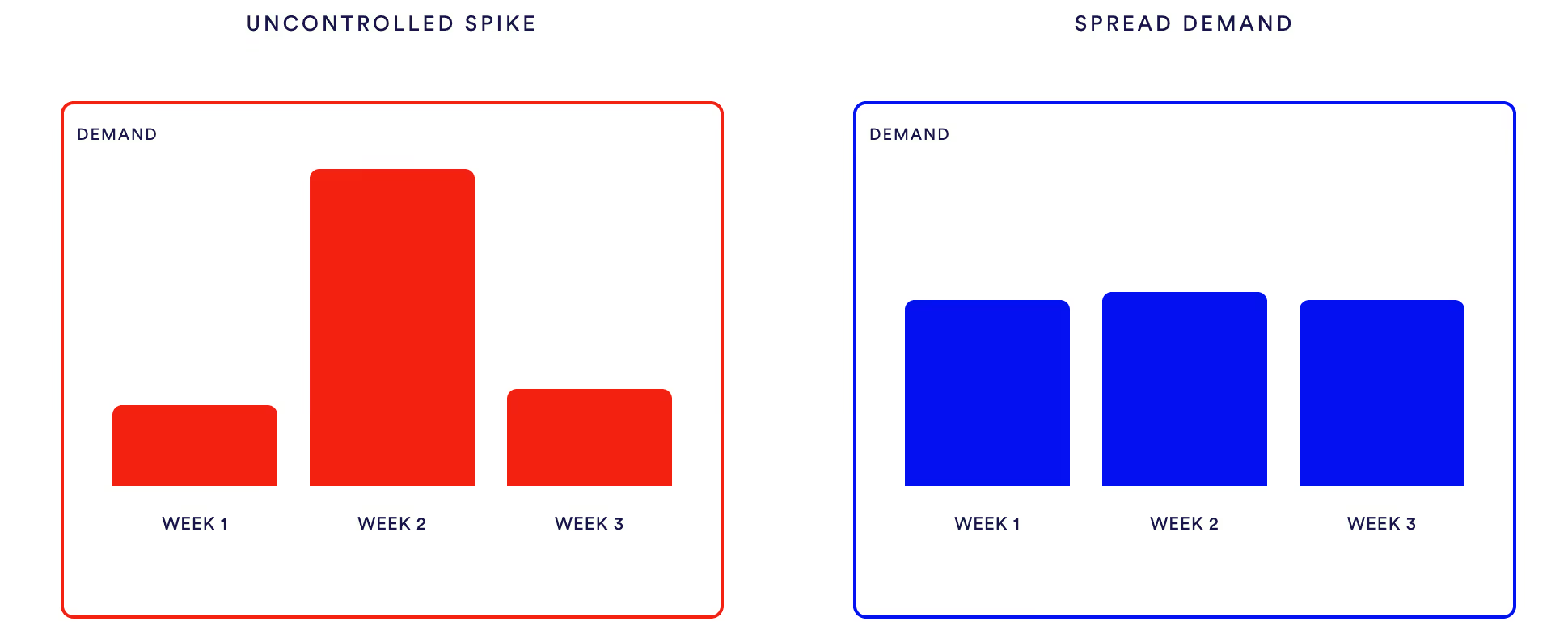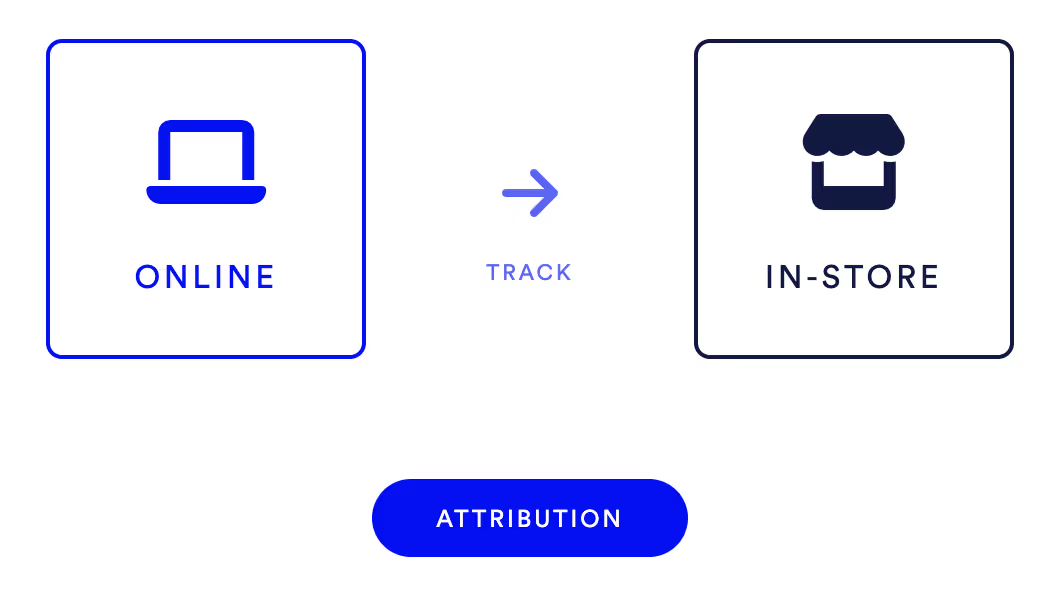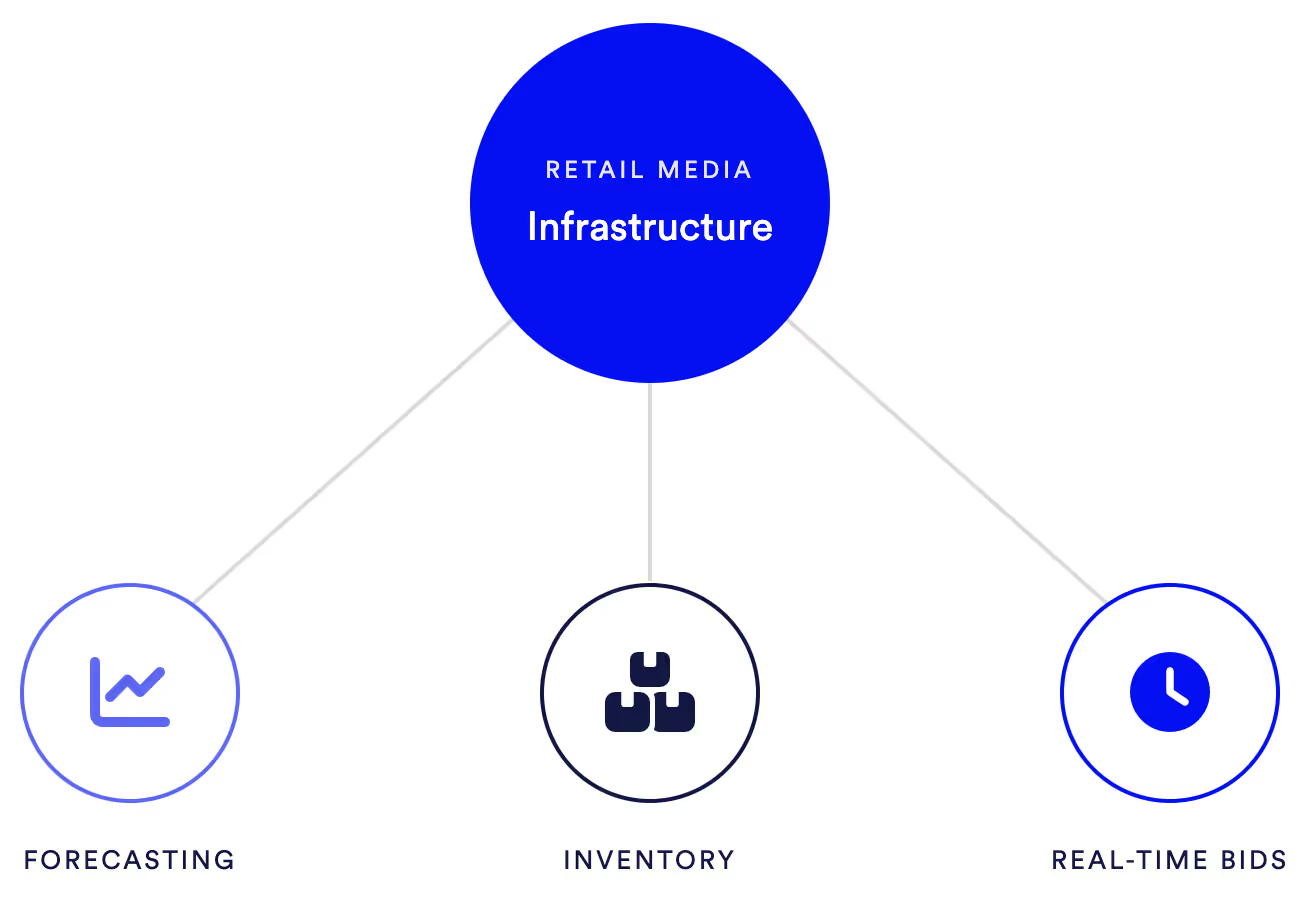
When fall picks up, inventory can get messy fast. Shoppers start looking for early deals, stores race to meet rising demand, and every department is trying to work in sync. If ads jump ahead of stock, or items sell faster than planned, that’s when overwhelm sets in. Boxes crowd the backroom or run out before they can be restocked. Either way, it hurts profit and slows down teams.
A self-serve retail media infrastructure brings order to seasonal chaos. Instead of guessing when to promote each item, retailers can rely on live data and real-time autobidding to stay in sync with demand. With Topsort’s advanced ad intelligence suite—Toptimize, including built-in bidding, forecasting, and relevance scoring—campaigns can be tested, refined, and adjusted on the fly. The result is promotions that roll out when they’re most effective—helping reduce stock spikes that cost time, shelf space, and lost sales.
Why Inventory Spikes Happen in the First Place
Fall always brings a sales crunch. New product launches, holiday ads, and shopper traffic come together fast as the season hits its stride. Promotions can stack up quickly, forcing supply teams to react at the last minute. Ads go live, customers rush in, and shelves thin out long before staff can adjust.
Another reason is timing that’s out of step between teams. If marketing and supply chain planning aren't connected, ads can drive demand before the backroom is ready. Sales teams might not see what’s ahead until the orders show up. And without a clear record of how past campaigns lined up with inventory, there’s no way to know what’s working. It’s not just about having more inventory—it’s about placing it in the right location when people are actually shopping.

Connecting Promotions With Smarter Forecasting
Staying balanced gets easier with a clear view ahead. That comes from smarter forecasting, not static reports. With technology like Toptimize, machine learning helps predict how campaigns will play out using everything from ad clicks to last year’s trends.
Retailers can move away from guesswork on how many shoppers will show up. Ads can be set to launch when products actually have a chance to move. Experimentation is built in—retailers can run different timing, formats, or audiences, while the platform continuously optimizes toward better performance.
This means less reacting to sudden sell-outs. Retailers can set orders, shift stock, or switch up timing based on what needs a push. Forecasting makes campaign planning and inventory sync up in real time. No need to chase down mistakes or rush to make space—just a smoother cycle all around.

Tying all that together through the retail media infrastructure links plans and promotions directly to what the floor needs.
Using Ad Timing to Spread Demand Across Stock
Fall doesn’t need to feel like a flood of shoppers or empty shelves. Proper ad timing lets retailers shape demand instead of getting caught by surprise. A self-serve retail media platform with autobidding gives full control. Seasonal ads don’t all have to go out at once. Campaigns can be paused, shifted, or ramped up based on real conditions in each store or online.
- Focus ads on products with extra stock waiting
- Pause or stagger promotions if certain items are running low
- Adjust which SKUs, locations, or formats get attention—sometimes weekly, sometimes daily
With the flexibility of a self-serve retail media platform, teams don’t have to wait for a crisis to make changes. Demand can move steadily, matching stock and staffing without stress on the back end.

The Role of Real-Time Attribution Between Online and Offline
Most shoppers cross channels as they buy. Some start on a phone, finish in a store, or even browse shelves and go home to check prices online. In-Store Journeys tracks these moves so nothing gets lost between digital and physical.
Attribution connects the dots. When it’s clear that a web ad drove traffic to a certain location, or that foot traffic spiked after a targeted campaign, retailers no longer have to guess where to send more stock. The right tools help teams shift units at the store that needs it most—not just where last week’s data says it should go.

Decisions based on clicks alone miss the full pattern. Connecting those click-to-cart and in-person sales keeps overstock from building up and stops teams from playing catch-up with late shipments.
Letting Brands Support Stock Rotation Without Slowing Retail Ops
Busy seasons mean more brands jockeying for prime space. Every partner wants their products seen first. That can be a headache if every campaign brings new timelines, messaging, or creative material. With a demand platform like Toppie, brands can activate campaigns across multiple ad publications within the retail media network—without building one-off connections with each retailer.
This keeps the retailer in full control. Teams decide when campaigns go live and which items get a spotlight, avoiding frantic last-minute edits or unexpected uploads. Brands supply the content and timing on their end. The scheduling, bidding, and reporting stay with the retailer.
An API-first ad server handles this scale. Even when dozens of campaigns are running—often with changes rolling out daily—the backbone stays steady. Larger pushes get the same smooth process, with no risk of slowdowns or system crashes.
Keeping Sales Steady and Storage Clear
Inventory headaches rarely come from a single big missed step. More often, it’s a stack of little problems—one early promotion, one ad run too long, a late restock, or a hot item with nothing to back it up. Retailers using connected tools run with fewer blind spots. Campaigns line up with shelf space. Switches and tweaks happen quickly.
A retail media infrastructure brings it all together. Stores launch campaigns when the timing lines up with both sales and supply. Data from the floor, from digital actions, and from brands feeds into ads that will make the right difference. Everyone keeps moving at a steady pace.

When the pace picks up, so does the risk—yet, with smart planning, forecasting, and flexible autobidding, store rooms stay clear, sales stay steady, and the busy season ends with more wins and less scrambling. This is what it feels like to work with the flow of demand, not the confusion.
Planning ahead gets easier when every piece works together, from campaign timing to shelf space. Whether you're prepping for fall demand or keeping everyday sales steady, it's smart to make sure your tools talk to each other. With a strong setup, retailers can run smarter ads, track real results, and adjust without slowing down the pace.
When your systems connect through a strong retail media infrastructure, that kind of control becomes a lot more doable. If you're ready to build with us, reach out to Topsort.


